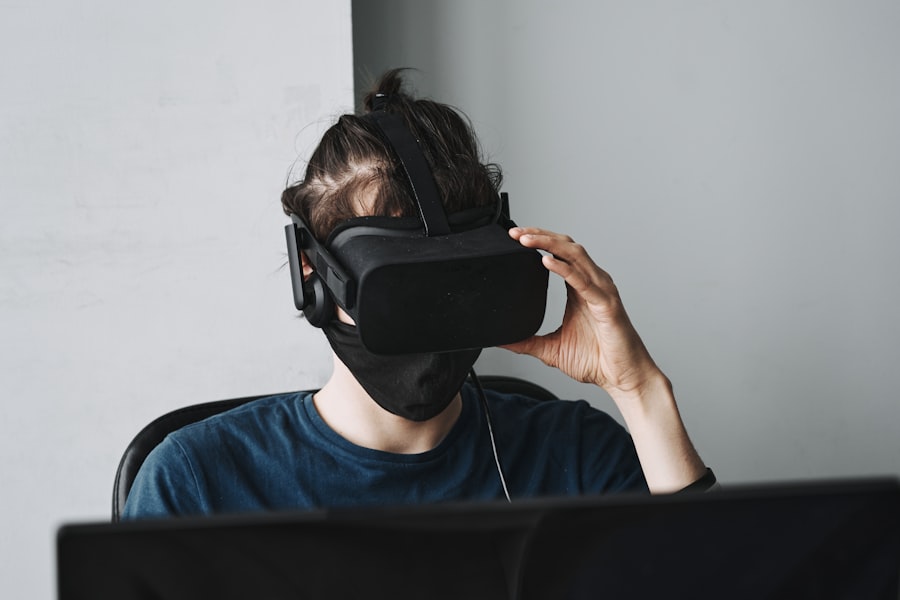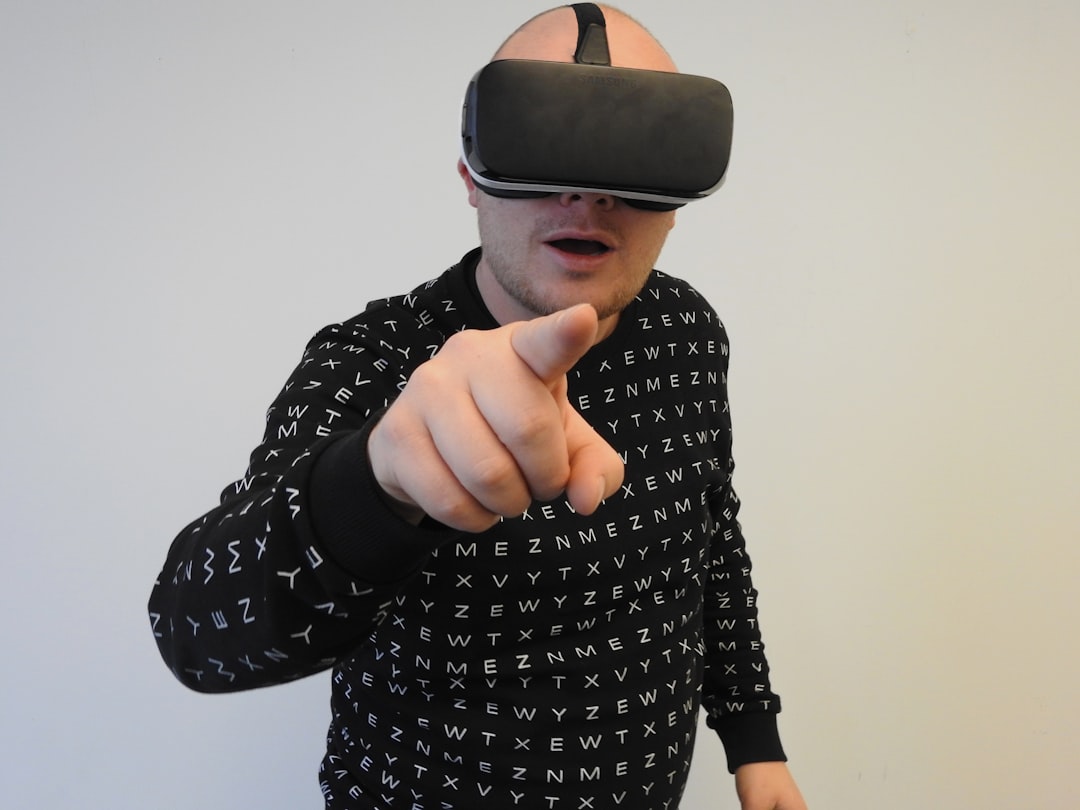The concept of the metaverse has rapidly evolved from a niche idea in science fiction to a burgeoning reality that is capturing the attention of tech giants and consumers alike. The metaverse represents a collective virtual space where users can interact with a computer-generated environment and other users in real-time. This immersive digital universe is characterized by its ability to blend augmented reality (AR), virtual reality (VR), and the physical world, creating a seamless experience that transcends traditional boundaries.
As this digital frontier expands, companies like Samsung are positioning themselves at the forefront of this technological revolution, leveraging their expertise in hardware and software to shape the future of virtual interactions. Samsung’s role in the metaverse is multifaceted, encompassing a range of initiatives that aim to enhance user experiences and drive innovation. The company has long been a leader in consumer electronics, and its foray into the metaverse is a natural extension of its commitment to pushing technological boundaries.
By investing in VR and AR technologies, Samsung is not only creating new products but also developing platforms that facilitate social interaction, entertainment, and commerce within the metaverse. This strategic approach allows Samsung to harness its existing capabilities while exploring new avenues for growth in an increasingly digital world.
Key Takeaways
- Samsung is playing a significant role in the rise of the metaverse, a virtual reality space where users can interact with a computer-generated environment and other users.
- Samsung has made substantial investments in virtual reality technology, positioning itself as a key player in the development of the metaverse.
- Samsung’s metaverse ecosystem offers a wide range of virtual reality experiences, from entertainment and gaming to education and training.
- The impact of Samsung’s metaverse on entertainment and gaming is expected to be substantial, offering immersive and interactive experiences for users.
- Samsung’s metaverse has the potential to revolutionize education and training, providing new and innovative ways for learning and skill development.
Samsung’s Investment in Virtual Reality Technology
Samsung’s investment in virtual reality technology is evident through its development of cutting-edge devices and software solutions designed to enhance user experiences. The Samsung Gear VR, launched in collaboration with Oculus, was one of the company’s first significant steps into the VR landscape.
The Gear VR not only provided a glimpse into the potential of virtual reality but also laid the groundwork for future advancements in immersive experiences. In addition to hardware, Samsung has also focused on software development to complement its VR offerings. The company has invested in creating a robust ecosystem of applications that cater to various interests, from gaming to education and beyond.
By fostering partnerships with content creators and developers, Samsung has ensured that its VR platform remains dynamic and engaging. This commitment to software development is crucial for maintaining user interest and driving adoption, as a rich library of content is essential for any successful VR ecosystem.
Exploring Samsung’s Metaverse Ecosystem

Samsung’s metaverse ecosystem is designed to be an interconnected network of devices, applications, and services that facilitate seamless interactions within virtual environments. At the core of this ecosystem are Samsung’s flagship devices, such as smartphones, tablets, and smart TVs, which serve as gateways to the metaverse. By leveraging its extensive product lineup, Samsung aims to create a cohesive experience that allows users to transition effortlessly between different platforms and environments.
One of the key components of Samsung’s metaverse ecosystem is its focus on interoperability. The company recognizes that for the metaverse to thrive, users must be able to access various experiences without being confined to a single device or platform. This vision is reflected in Samsung’s development of cross-platform applications that can be accessed on multiple devices, ensuring that users can engage with the metaverse regardless of their preferred technology.
By prioritizing interoperability, Samsung is positioning itself as a leader in creating a truly inclusive metaverse experience.
The Impact of Samsung’s Metaverse on Entertainment and Gaming
| Metrics | Impact |
|---|---|
| User Engagement | Increased user engagement through immersive experiences |
| Revenue Generation | New revenue streams from virtual goods and experiences |
| Content Creation | Opportunities for content creators to develop new experiences |
| Brand Presence | Enhanced brand presence and marketing opportunities |
| Collaborations | Potential for collaborations with entertainment and gaming industry |
Samsung’s foray into the metaverse has significant implications for the entertainment and gaming industries. As one of the largest consumer electronics manufacturers globally, Samsung has the potential to influence how content is created, distributed, and consumed within virtual environments. The company’s investment in VR technology has already begun to reshape gaming experiences, allowing players to immerse themselves in richly detailed worlds that were previously unimaginable.
The integration of VR into gaming has opened up new avenues for storytelling and interactivity. For instance, titles developed specifically for Samsung’s VR platforms leverage the unique capabilities of immersive technology to create engaging narratives that draw players into their worlds. Games like “Beat Saber” and “Half-Life: Alyx” exemplify how VR can transform traditional gaming experiences by offering players a sense of presence and agency that flat-screen gaming cannot replicate.
As more developers create content tailored for Samsung’s metaverse ecosystem, the potential for innovative gameplay experiences will continue to expand. Moreover, Samsung’s influence extends beyond gaming into broader entertainment sectors such as film and live events. The company has explored ways to integrate VR into cinematic experiences, allowing viewers to step inside stories and interact with characters in real-time.
This shift could redefine how audiences engage with media, creating opportunities for immersive storytelling that captivates viewers on a deeper level.
Samsung’s Metaverse and its Potential Applications in Education and Training
The potential applications of Samsung’s metaverse extend far beyond entertainment; they also encompass education and training. As educational institutions increasingly seek innovative ways to engage students, virtual reality offers a powerful tool for enhancing learning experiences. Samsung’s commitment to developing educational content within its metaverse ecosystem positions it as a key player in this transformative space.
In educational settings, VR can provide students with immersive learning experiences that transcend traditional classroom boundaries. For example, history students can virtually explore ancient civilizations or significant historical events, gaining insights that would be difficult to achieve through textbooks alone. Similarly, science students can conduct virtual experiments in controlled environments, allowing them to explore complex concepts without the limitations of physical resources.
By integrating these experiences into its metaverse ecosystem, Samsung can help educators create more engaging curricula that foster deeper understanding. Training programs across various industries can also benefit from Samsung’s metaverse initiatives. Companies can utilize VR simulations to train employees in high-stakes environments without the associated risks.
For instance, medical professionals can practice surgical procedures in a virtual setting before performing them on real patients, enhancing their skills while minimizing potential errors. By providing access to realistic training scenarios, Samsung’s metaverse can help organizations improve workforce readiness and efficiency.
The Future of Social Interaction in Samsung’s Metaverse

As social interaction becomes increasingly digitalized, Samsung’s metaverse offers new avenues for connection and collaboration among users. The company’s vision for social engagement within this virtual space emphasizes community building and shared experiences. By creating platforms where users can interact with one another in real-time, Samsung aims to foster meaningful connections that transcend geographical boundaries.
One of the most exciting aspects of social interaction in Samsung’s metaverse is the potential for shared experiences within virtual environments. Users can attend concerts, art exhibitions, or sporting events together, regardless of their physical locations. This capability not only enhances social engagement but also democratizes access to cultural events that may have previously been limited by geography or cost.
For instance, a user in New York could attend a virtual concert featuring their favorite band alongside friends from around the world, creating a sense of community that traditional media cannot replicate. Furthermore, Samsung’s focus on user-generated content within its metaverse ecosystem encourages creativity and collaboration among users. By providing tools for individuals to create their own virtual spaces or experiences, Samsung empowers users to express themselves and share their creations with others.
This participatory approach fosters a vibrant community where users can connect over shared interests and collaborate on projects, ultimately enriching the overall metaverse experience.
Challenges and Concerns Surrounding Samsung’s Metaverse
Despite the promising potential of Samsung’s metaverse initiatives, several challenges and concerns must be addressed as the technology continues to evolve. One significant issue is privacy and data security within virtual environments. As users engage with immersive experiences and share personal information online, safeguarding their data becomes paramount.
Samsung must implement robust security measures to protect user information from breaches or misuse while ensuring compliance with regulations such as GDPR. Another challenge lies in ensuring accessibility for all users. While VR technology has made significant strides in recent years, there are still barriers preventing widespread adoption.
High costs associated with VR hardware can limit access for many individuals, particularly those from underserved communities. To create an inclusive metaverse experience, Samsung must explore ways to make its technology more affordable and accessible while also considering diverse user needs across different demographics. Additionally, there are concerns regarding the potential for addiction or over-reliance on virtual environments as users become increasingly immersed in digital experiences.
Striking a balance between engaging content and healthy usage patterns will be crucial for fostering positive interactions within Samsung’s metaverse ecosystem.
The Road Ahead: Samsung’s Vision for the Metaverse
Looking ahead, Samsung envisions a metaverse that seamlessly integrates with everyday life while enhancing user experiences across various domains. The company’s commitment to innovation will drive ongoing advancements in hardware and software solutions designed specifically for this digital landscape. As technology continues to evolve rapidly, Samsung aims to remain at the forefront by investing in research and development initiatives focused on emerging trends such as AI-driven interactions and enhanced haptic feedback systems.
Moreover, collaboration will play a vital role in shaping the future of Samsung’s metaverse ecosystem. By partnering with developers, content creators, educational institutions, and industry leaders, Samsung can foster an environment conducive to innovation while expanding its reach within diverse sectors. These collaborations will not only enhance content offerings but also ensure that the metaverse remains relevant and responsive to user needs.
Ultimately, Samsung’s vision for the metaverse encompasses a holistic approach that prioritizes user experience while addressing challenges related to privacy, accessibility, and social interaction. As the company continues to explore new possibilities within this digital frontier, it is poised to play a pivotal role in shaping how individuals connect, learn, and engage with one another in an increasingly interconnected world.
This move by Samsung is in line with the growing trend of tech companies exploring the potential of the metaverse. In a related article, Xiaomi is also making waves in the metaverse with its HyperOS platform, which aims to provide users with a seamless virtual experience. The competition in the metaverse space is heating up, with companies like Samsung and Xiaomi vying for dominance in this new digital frontier. To read more about Xiaomi’s HyperOS platform, check out this article.
FAQs
What is the Samsung Metaverse?
The Samsung Metaverse is a virtual reality platform developed by Samsung that allows users to interact with a computer-generated environment and other users through the use of virtual reality headsets and other devices.
What can users do in the Samsung Metaverse?
In the Samsung Metaverse, users can engage in various activities such as socializing with other users, exploring virtual environments, playing games, attending virtual events, and consuming digital content.
What devices are compatible with the Samsung Metaverse?
The Samsung Metaverse is compatible with a range of virtual reality headsets and devices, including Samsung’s own VR headsets, as well as other popular VR devices on the market.
Is the Samsung Metaverse accessible to everyone?
The Samsung Metaverse is designed to be accessible to a wide range of users, including those with compatible VR devices and an internet connection. However, certain features and experiences within the platform may require additional purchases or subscriptions.
What are some potential applications of the Samsung Metaverse?
The Samsung Metaverse has the potential to be used for various applications, including virtual meetings and collaboration, virtual tourism, immersive entertainment experiences, virtual education and training, and more.

Leave a Reply